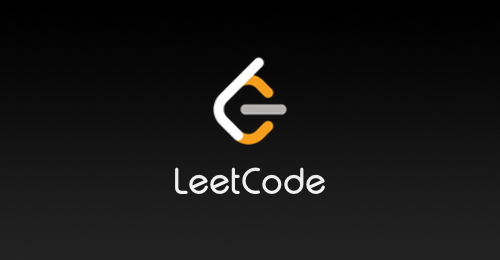225. Implement Stack using Queues
Description
Implement a last-in-first-out (LIFO) stack using only two queues. The implemented stack should support all the functions of a normal stack (push, top, pop, and empty).
Implement the MyStack class:
void push(int x)Pushes element x to the top of the stack.int pop()Removes the element on the top of the stack and returns it.int top()Returns the element on the top of the stack.boolean empty()Returns true if the stack is empty, false otherwise.
Notes:
- You must use only standard operations of a queue, which means that only
push to back,peek/pop from front,sizeandis emptyoperations are valid. - Depending on your language, the queue may not be supported natively. You may simulate a queue using a list or deque (double-ended queue) as long as you use only a queue’s standard operations.
Example 1:
- Input
[“MyStack”, “push”, “push”, “top”, “pop”, “empty”]
[[], [1], [2], [], [], []] - Output
[null, null, null, 2, 2, false] - Explanation
MyStack myStack = new MyStack();
myStack.push(1);
myStack.push(2);
myStack.top(); // return 2
myStack.pop(); // return 2
myStack.empty(); // return False
Constraints:
- 1 <= x <= 9
- At most
100calls will be made topush,pop,top, andempty. - All the calls to
popandtopare valid.
Follow up: Can you implement the stack using only one queue?
Submitted Code
from collections import deque
class MyStack(object):
def __init__(self):
self.queue = deque() # 큐 생성
def push(self, x):
"""
:type x: int
:rtype: None
"""
self.queue.append(x) # 가장 위에 값을 추가
def pop(self):
"""
:rtype: int
"""
return self.queue.pop() # 가장 위의 값을 제거
def top(self):
"""
:rtype: int
"""
return self.queue[-1] # 가장 위의 값을 확인만 하기
def empty(self):
"""
:rtype: bool
"""
return len(self.queue) == 0 # 빈 큐일때만 True 반환
# Your MyStack object will be instantiated and called as such:
# obj = MyStack()
# obj.push(x)
# param_2 = obj.pop()
# param_3 = obj.top()
# param_4 = obj.empty()
Runtime: 0 ms | Beats 100.00%
Memory: 12.41 MB | Beats 56.85%
Other Solutions
1st
class MyStack:
def __init__(self):
self.q = deque()
def push(self, x: int) -> None:
self.q.append(x) # 1. 큐의 뒤에 값 추가
for _ in range(len(self.q) - 1): # 2. 큐의 앞에서 값을 꺼내서 뒤에 다시 추가하는 것을 (길이-1)번 반복
self.q.append(self.q.popleft())
def pop(self) -> int:
return self.q.popleft() # pop: 큐의 맨 앞 == 스택의 맨 위(push에서 순서 변경됨)
def top(self) -> int:
return self.q[0] # top: 큐의 맨 앞 == 스택의 맨 위(push에서 순서 변경됨)
def empty(self) -> bool:
return len(self.q) == 0 # empty: 큐의 길이가 0이면 비어있는 것
time complexity: 𝑂(1): pop, top, empty / 𝑂(𝑛): push
space complexity: 𝑂(𝑛)
큐 1개로 구현하는 방법
2nd
class MyStack:
def __init__(self):
self.q1 = deque() # 큐1 (메인)
self.q2 = deque() # 큐2 (임시)
def push(self, x: int) -> None: # push: 큐1에 새 값 추가
self.q1.append(x)
def pop(self) -> int:
while len(self.q1) > 1: # 1. 큐1의 오래된 값부터 하나씩 꺼내서 큐2로 이동
self.q2.append(self.q1.popleft())
popped_val = self.q1.popleft() # 2. 큐1에 마지막 남은 값 꺼내서 저장
self.q1, self.q2 = self.q2, self.q1 # 3. 큐1과 큐2를 교체
return popped_val
def top(self) -> int:
while len(self.q1) > 1: # 1. 큐1의 오래된 값부터 하나씩 꺼내서 큐2로 이동
self.q2.append(self.q1.popleft())
top_val = self.q1[0] # 2. 큐1에 마지막 남은 값 확인만 해서 저장
self.q2.append(self.q1.popleft()) # 3. 큐1의 마지막 값도 큐2로 이동
self.q1, self.q2 = self.q2, self.q1 # 4. 큐1과 큐2를 교체
return top_val
def empty(self) -> bool:
return len(self.q1) == 0 # empty: 큐1이 비어있는지 확인
time complexity: 𝑂(1): push, empty / 𝑂(𝑛): pop, top
space complexity: 𝑂(𝑛)
큐 2개로 구현하는 방법



Leave a comment